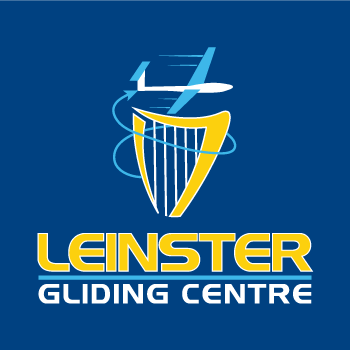The first Dublin Gliding Club was formed in 1934 and operated successfully near the site that later became Dublin Airport, but it seemed to fade away after 1936. A second Dublin Gliding Club appeared briefly in 1949 but never succeeded in commencing flying operations.

The third incarnation traces its origins to a letter written by Charles O’Connor to the Dublin Evening Mail in January 1952. A meeting of interested parties held two months later led to the formation of today’s Dublin Gliding Club.
Among the 12 founder members two individuals often attract interest. Ken Mellor was an English RAF pilot and instructor who moved to Ireland after the war. Freidi Heinzl was a Luftwaffe pilot who was interned in Ireland when his aircraft made a forced landing and chose to stay after the war. Despite their seemingly incongruous backgrounds both had a long and active association with the club.
Weston, Baldonnel and the Curragh
The club was initially based at Weston Airfield and launching was by car tow. At that time the highest launch achieved was 780 feet. By 1954 weekend operations had started at Baldonnel. There the long runway allowed car tow launches to regularly achieve 1600 feet and a maximum of 2000 feet. During the summer (when Baldonnel’s grass strip required regular cutting) operations shifted to the Curragh where car tows also gave up to 2000 feet (despite a very bumpy surface).
By the late fifties all club operations were at Baldonnel and from 1963 no_image_yetonwards featured the reverse pulley launch. This was a unique form of car tow launch where the car faced the launching glider. The launch cable went around a large pulley wheel attached to the end of the runway behind the car and from there along the length of the runway to the glider.
The V8
The tow car would start driving to one side of the runway to avoid fouling the cable and with roar of a V8 accelerate towards the glider. The approaching glider was soon airborne. A cable tension gauge was used to maintain a good constant tension launch while the glider attitude controlled climb rate and speed. At the top of the launch the glider released while the tow car went flat out until the cable, now descending on a parachute, neared the ground. Thus the car ended up at the glider launch point where the cable end that had been on the car could be transferred to the next glider. The car then drove down the runway to hook on to the far end of the cable ready to launch again.
Using this method, the record launch altitude for a single seater was 4800 feet and 4200 feet for a two seater. Other uses for a tow car
The tow car may have had a secret life when not watched over by the DGC, being taken for the occasional fast joyride up and down the runway at Baldonnel. On one occasion the car apparently escaped from Baldonnel and was recovered half way down the N7 to Naas. In its most remarkable incident the car acquired a number of bullet holes, apparently when some bored servicemen felt a need for target practice.
Altitude Record in Kerry
An annual safari to fly in Kerry began with a visit to Farranfore airport in the Summer of 1970. Throughout the 1970s the safari remained based at Farranfore with occasional car launches from the beaches of Inch or Fermoyle, but from 1980 on all flying was from the beaches.
A car launch to 1000 feet could normally be expected which is ample height to get to the nearby hills and ridge lift. However the attraction of gliding in Kerry is the possibility of wave flights set up by the mountains around Killarney and the Dingle peninsula.
On September 20, 1991 conditions looked right and Brian Connolly attempted a diamond height gain. Having obtained clearance from Shannon he eventually climbed to a height of 24000 feet. This still stands as the Irish gliding altitude and height gain record, and is remarkable for having started from a humble 900 foot car launch from sea level.
Aerotows and a New Home
In 1974, the club acquired a 4 year old Rallye Minerva 220 from the London Gliding Club at Dunstable. It’s serviceability was poor and it was eventually replaced with the club’s current tow plane (EI-BIK), a Piper Super Cub 180.
As the Air Corps became more active at Baldonnel and the club wished to expand its operations the search for a new site began. Baron Martin De Robeck, who farmed near Punchestown, Naas, owned a 40 acre field which had been a licensed airfield since the 1930s. His father had been an aviation enthusiast and he welcomed the club as tenants to Gowran Grange. The club experimented with flying from Gowran Grange while continuing to operate from Baldonnel between 1976-1979. The last flight from Baldonnel took place in November 1980 and Gowran Grange has been the club’s base ever since.
Adapted from source material in “Fixing the Trace” by Peter Denman
